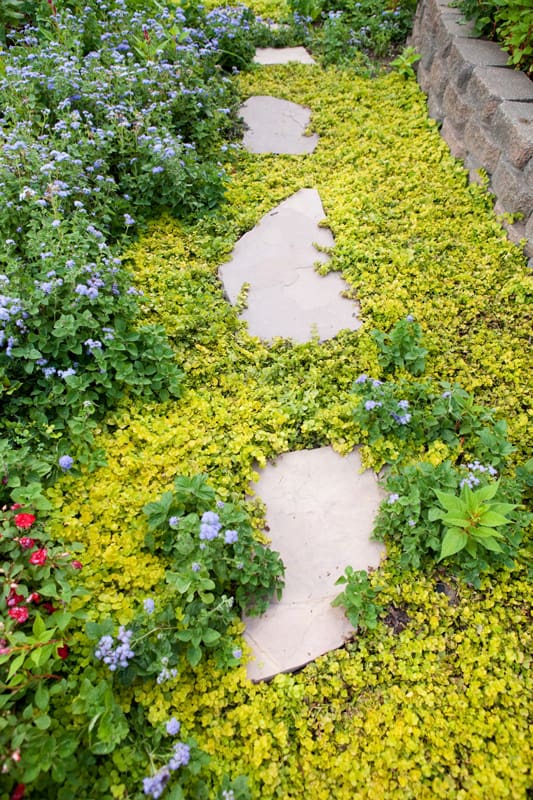Creeping Jenny is a well-loved perennial because it's easy to grow and requires little maintenance. Have you noticed something eating your Creeping Jenny but don't know what to do about it? We thoroughly researched the answer for you, so look no further!
Most of the time, the sawfly larvae is the one eating your Creeping Jenny. They look like white caterpillars with gray spots. Despite that, don't worry! There are some easy tips and tricks to remedy problems.
Also, you might be wondering, how do I prevent my Creeping Jenny from dying? And what kind of soil do they like? Or will Creeping Jenny choke out other plants? Continue reading for answers to these questions and more!
![Golden creeping jenny on top of a ledge, What Is Eating My Creeping Jenny? [And How To Prevent It]](https://gardentabs.com/wp-content/uploads/2022/08/What-Is-Eating-My-Creeping-Jenny-And-How-To-Prevent-It-1.png)
What Is Eating My Creeping Jenny?
The Creeping Jenny has green, coin-shaped leaves bloom tiny yellow flowers for part of the season. But although this groundcover is hardy, no plant is free from problems.
The sawfly larvae likes to feed on Creeping Jenny and trees and shrubs. It looks like small, tiny holes in the leaves during an infestation. They are heavy eaters and can chew down the leaves to just the stems.
Don't mistake them for caterpillars, even though they look similar. Knowing this will help you successfully remove them and prevent another invasion.
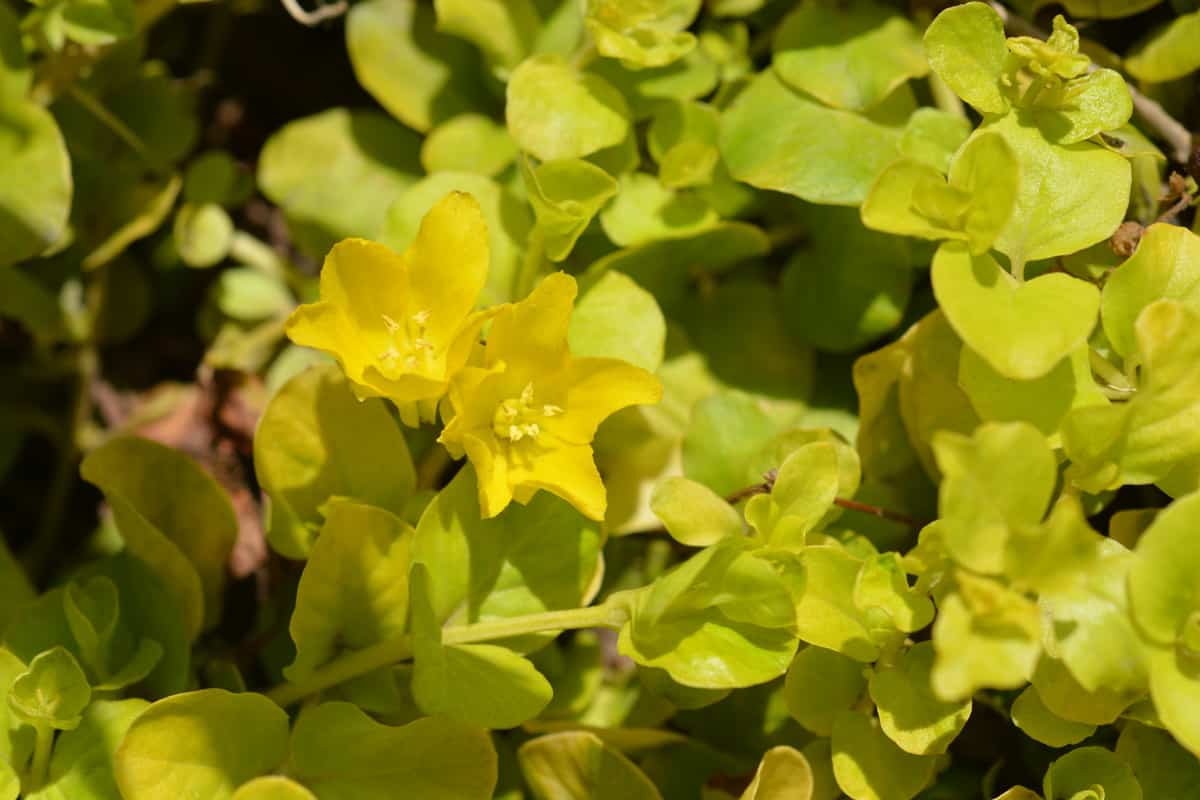
How Do I Prevent The Sawfly Larvae From Eating Creeping Jenny?
Prevention is key! However, if you find yourself scouring your Creeping Jenny for the little larvae, it's not too late. You can still salvage your beautiful plant in a snap. Let's go over some steps on how to prevent the sawfly larvae from eating your Creeping Jenny.
- First, remove any larvae that you see from the plant and discard them. If you want to avoid touching them, use a high-pressure water nozzle to knock them off the plant.
- Once you remove all larvae, prune back any eaten or dead areas.
- Then, use an insecticide and spray thoroughly. Natural insecticides like spinosad or conventional insecticides like malathion are the best options. Tip: Bacillus thuringiensis is useful for controlling caterpillars but won't work on sawflies.
- It's important to follow up every couple of days to ensure another infestation doesn't occur. The larvae can stick around for several generations.
- Spray the insecticide a second time if any sawflies remain.
- Also, check every spring for sawflies and treat them at the first appearance.
Voila! You have successfully removed sawflies from your Creeping Jenny.
Click here to see this insecticide on Amazon
How Do I Identify Sawfly Larvae?

Sawfly larvae look similar to butterfly and moth caterpillars. Identifying sawflies is important to make sure you are treating for the correct insect. Here are some things to look for when identifying a sawfly.
- Sawflies have 6 pairs of prolegs or more compared to caterpillars that have 2 to 5 prolegs.
- Sawflies are smooth with little to no hair. Caterpillars can be smooth, hairy, or spiny.
- Sawflies are no more than 1 inch long when fully grown. Caterpillars are often larger than one inch long and can vary in size.
If all else fails and you still don't know if you have a sawfly on your hands, snap a photo and do a quick Google search.
What Diseases Affect Creeping Jenny?
Actually, Creeping Jenny suffers more from fungal diseases than they do sawflies. Let's review three types of diseases that affect Creeping Jenny and what to do about it.
Botrytis Blight
Botrytis blight is a fungal disease that thrives during rainy seasons and cooler temperatures. You will notice gray spores that scatter like dust. The good news is that Botrytis blight is treatable with a liquid copper fungicide.
Southern Blight
This type of fungal disease looks like little spiderwebs in between your Creeping Jenny. Unfortunately, it directly attacks the roots, killing your Creeping Jenny. The best thing to do is start fresh! Dig up and discard your plant.
Phyllosticta Leaf Spot
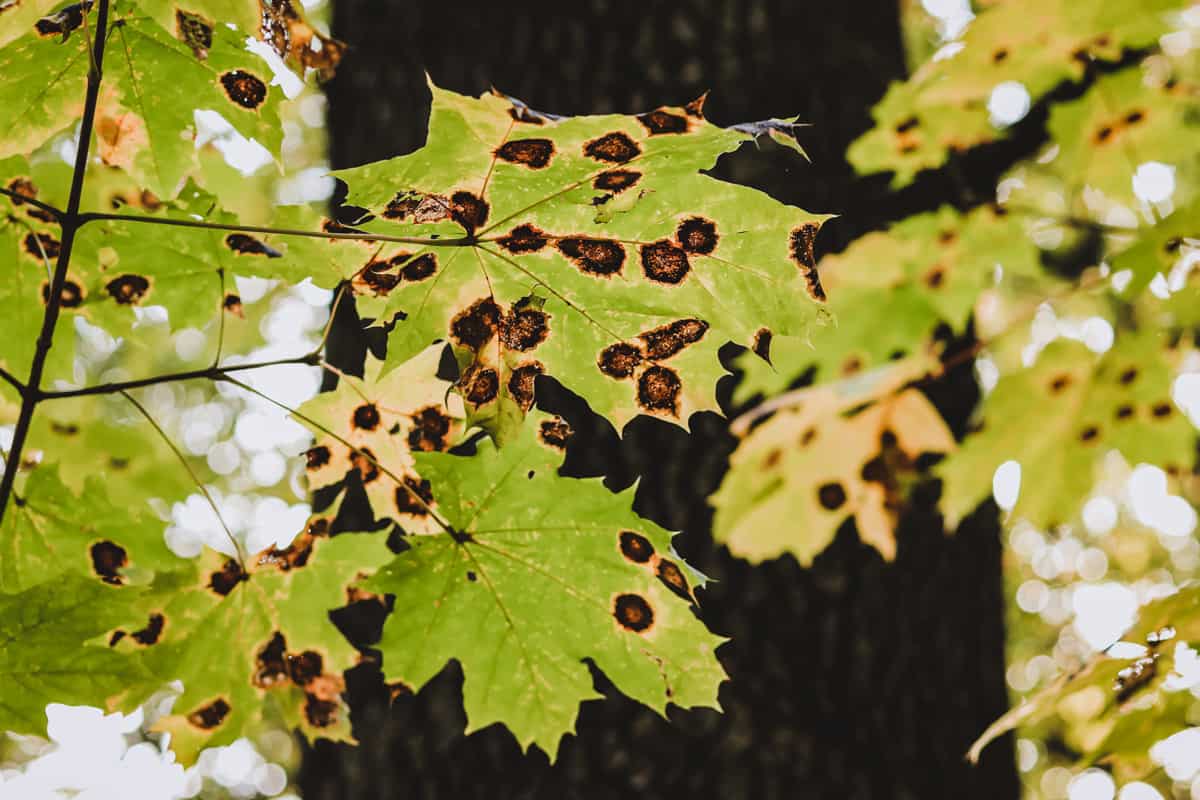
This fungal disease looks like brown spots on the leaves. This is another fungal disease that you can treat with copper fungicide.
Another great way to avoid leaf spots is to avoid watering your garden with overhead sprinklers. Instead, water near the base of the plant to prevent fungus.
Click here to see this copper fungicide on Amazon
How Do I Care For Creeping Jenny?
Creeping Jenny is a hardy and fast-growing ground cover. In fact, it has known to be invasive and takes over other plants. Even so, they still need some TLC.
Soil
This plant prefers moist and well-drained soil. Acid, alkaline, or neutral soil pH are all acceptable. Creeping Jenny does well in fertile soil, so adding compost or coffee grounds will help the plant thrive.
Water
Creeping Jenny might need a little extra watering, especially during the summer. Water early in the morning to keep the plant cool during the hottest part of the day. What's more, water deeply and thoroughly for the plant to stand a chance during a heat wave.
Sun
Creeping Jenny is susceptible to sun stress. Avoid putting this plant in direct, hot sunlight otherwise, it could turn brown and cause the leaves to blanch. It does best in sun to partial shade. Pro Tip: Add extra mulch to provide protection and water retention.
Should You Cut Back Creeping Jenny?
You can cut back Creeping Jenny many times throughout the spring, summer, and fall. It can choke out other plants or take over your garden if not pruned often. It's an invasive plant, so don't be afraid to prune away!
Will Creeping Jenny Survive The Winter?
Creeping Jenny will survive the winter. Its USDA Hardiness Zone is 4-9, so they can survive cold temperatures with no trouble. In truth, they can survive temperatures in the negatives.
Does Creeping Jenny Have Yellow Flowers?
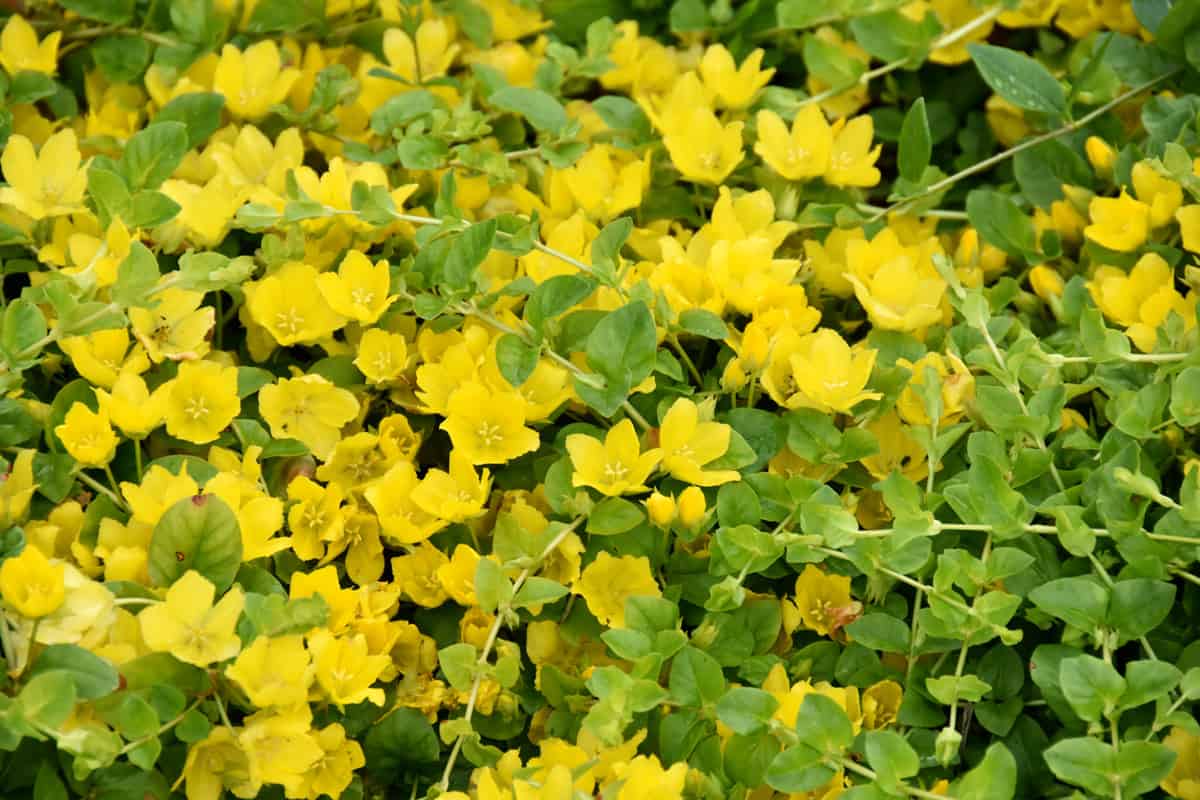
Creeping Jenny has yellow, tiny flowers that bloom in the early summer and intermittently in the fall. The blooms don't last long, but they sure are pretty! For the blooms to do well, they need plenty of water and some shade.
Can Creeping Jenny Be A Houseplant?
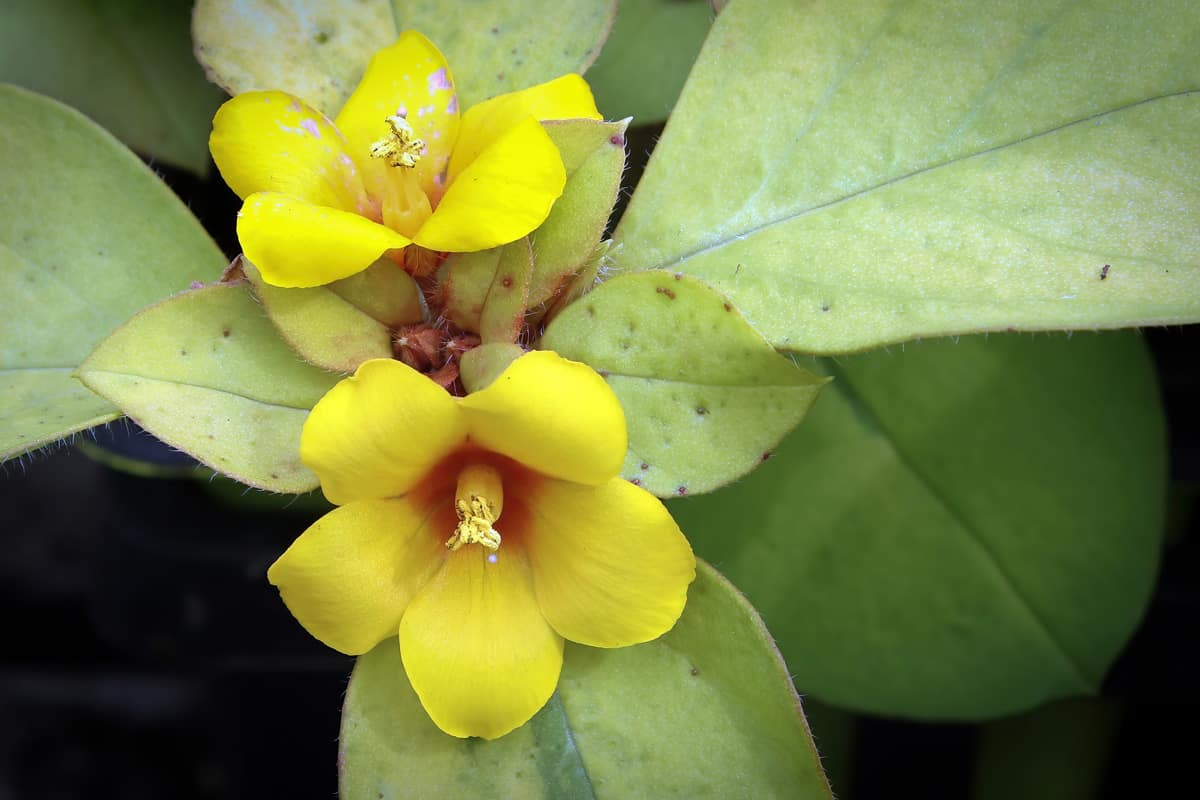
Yes, absolutely! Creeping Jenny is a perennial that does well as a houseplant. Room temperature is fine for spring, summer, and fall. But when winter hits, move it to a cooler spot and slow down the watering, so it gets a rest period.
Can You Propagate Creeping Jenny?
You can easily propagate Creeping Jenny. Cut off a long stem and plant it in a perlite mixture. Place it in a window with partial shade, and you should see roots in less than a month.
Can I Walk On Creeping Jenny?
Owing to its hardy nature, Creeping Jenny can tolerate someone walking lightly on it. It's often used near stone walkways and does a beautiful job of filling in cracks and crevices. Though, keep in mind trampling on this groundcover won't do it any favors.
Is Creeping Jenny Toxic?
Creeping Jenny is not toxic to humans or animals, making them an ideal plant for families and gardeners alike. Here's a fun fact. Did you know you can eat Creeping Jenny? Although not known for its culinary use, you can brew this plant as a warm herbal tea.
Wrapping It Up
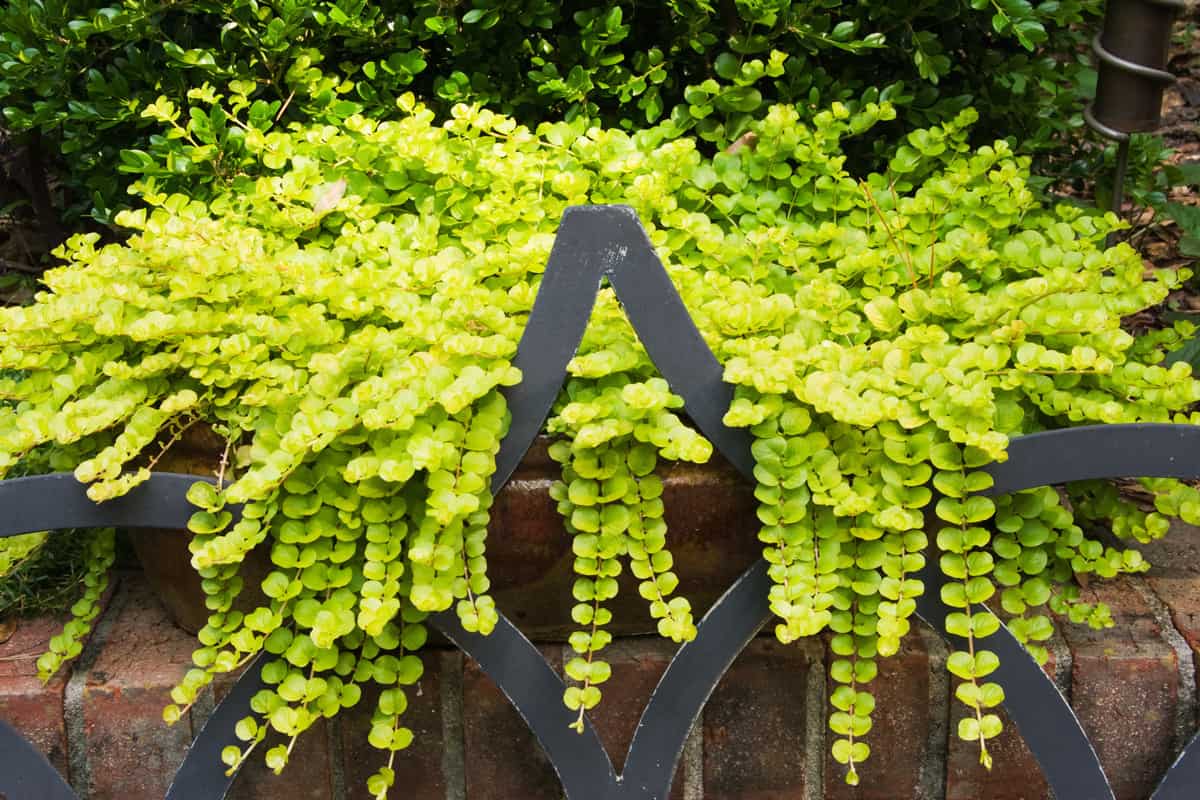
As you can see, Creeping Jenny isn't overly high-maintenance once you learn all the tips and tricks. Normally, Creeping Jenny gets a bite taken out by sawfly larvae. The prescription is a little pruning and spraying with insecticide to remedy this.
Made it to the end? Check out these helpful, related articles:
Why Is My Creeping Jenny Dying [And What To Do About It]



